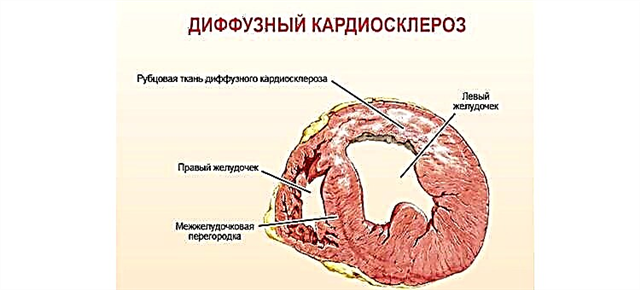Tonsillitis is an infectious disease in which inflammation of the tonsils (in most cases, palatine) occurs. The tonsils are located in the mouth and play an important role in the immune system. Tonsillitis is one of the most common bacterial infections of the upper respiratory tract.
Types of tonsillitis and stages
 The course of the infection is acute and chronic. Acute types are usually not so much an independent infection as the consequences of chronic tonsillitis, arising from the influence of psychological factors or other external prerequisites (hypothermia). The chronic form occurs after a relapse or poor-quality treatment. The acute form (or tonsillitis in everyday use) is a local illness with acute inflammation of the lymphatic rings of the throat (pharyngeal), tonsils. Bacteria that cause: hemolytic streptococci, staphylococci, chlamydia, mycoplasma, and other microorganisms.
The course of the infection is acute and chronic. Acute types are usually not so much an independent infection as the consequences of chronic tonsillitis, arising from the influence of psychological factors or other external prerequisites (hypothermia). The chronic form occurs after a relapse or poor-quality treatment. The acute form (or tonsillitis in everyday use) is a local illness with acute inflammation of the lymphatic rings of the throat (pharyngeal), tonsils. Bacteria that cause: hemolytic streptococci, staphylococci, chlamydia, mycoplasma, and other microorganisms.
Chronic form - prolonged irritation of the tonsils. It manifests itself after an acute form and bacterial diseases of the upper respiratory tract. In this case, the infection may not be accompanied by the presence of an acute form.
There are two known definitions of the stages of tonsillitis:
- The compensated period is the focus of infection, which is in a state of calm. From the side of the pathogen there is no obvious reaction, relapses do not appear. Almond function without disturbances, as well as the reactivity of the body.
- The decompensated period is characterized by relapses, complicated abscesses, with prolonged passage of the disease, the work of other organs (heart, nasal cavity, kidneys) is disrupted, at this stage it is possible to remove the tonsils in acute abscesses.
Angina is only an aggravated form with complicated symptoms.
Causes of tonsillitis
There are several causative agents of upper respiratory tract disease:
- Bacteriological prerequisites - streptococcus β-hemolytic group A, fewer streptococci are less common;
- Viral pathogens - adenoviruses from 1 to 9 types;
- Spirochetic pathogens in combination with a fusiform bacillus;
- Less commonly, a fungus.
Risk factors are: hypothermia, reduced immune system, glandular injury, early nasal fractures, diseases of the nasopharyngeal or oropharyngeal part, complications after acute respiratory viral infections and other diseases, stress, respiratory failure.
Chronic tonsillitis
Chronic tonsillitis is an inflammation of the pharyngeal tonsils, which occurs with alternating complications and transitions to other organs and improvements. The tonsils (both palatine and pharyngeal) take an active part in the work of our immune system. Therefore, diseases suffered in childhood have an impact on immunity in the future.
In the chronic form, a low body temperature is characteristic, which lasts for a long time, a violation of the nervous autonomic system occurs. Such complications also arise:
- Inflammation, passing into the kidneys, lungs and heart, causing rheumatism of the joints, increased allergic reactions, decreased self-defense of the body.
- Self-medication or insufficient attention to the treatment of chronic tonsillitis leads to any complications, ranging from purulent discharge in the throat.
The chronic form develops due to relapses of tonsillitis, flu and other acute viral ailments, the development of caries and the forms of its complications, periodontal disease.
 The disease manifests itself after prolonged obstruction of breathing due to a stuffy nose, deviated nasal septum, hyperplasia. The incubation period of chronic tonsillitis lasts three days, with minor symptoms, then they appear pronounced. Relapses reach five times a year.
The disease manifests itself after prolonged obstruction of breathing due to a stuffy nose, deviated nasal septum, hyperplasia. The incubation period of chronic tonsillitis lasts three days, with minor symptoms, then they appear pronounced. Relapses reach five times a year.
During the incubation period or between relapses, when the disease is calm, it is difficult to make a diagnosis in the initial stages, since no changes are visible in the tonsils themselves. Sore throat, which recurs regularly, causes a chronic form, so it is important to completely cure the disease.
Acute form
Angina in its full manifestation is an infectious disease with general and local manifestations. It manifests itself in the form of acute inflammatory processes of a complex of components of the lymphadenoid pharyngeal ring and tonsils. The diagnosis of angina began to be made even in ancient medicine, after which almost every pathological change in the oropharynx and nasopharynx is associated with it, which have approximate symptoms, but differ in the nature of the course.
The acute form of tonsillitis has the following types:
- Primary (ordinary, simplified, commonplace). The lymphadenoid pharyngeal rings are affected.
- Secondary tonsillitis. The tonsils are affected. They are also affected by problems with the circulatory system.
- Specific species - the causative agent is rare and specific, for example, a fungus.
The primary subtype of the disease is one of the most common when diagnosed, second only to acute respiratory. It manifests itself in cold periods, in winter or autumn. The age category is from 5-35 years old. The causative agent is streptococci, which are transmitted by airborne droplets, other infections and sore throat bacteria. The incubation period is a week, but during this time there is a possibility of infection.
The secondary subtype of the disease is due to the systemic nature, mainly affects the palatine tonsils. They appear after complications of infectious diseases: ARVI, measles, diphtheria, syphilis, etc. The incubation period in this case is 5-7 days, then acute symptoms appear.
Sore throat symptoms
 The disease begins abruptly and acutely: first, the temperature rises, chills, and after a few hours there are difficulties with swallowing, pain in the throat.
The disease begins abruptly and acutely: first, the temperature rises, chills, and after a few hours there are difficulties with swallowing, pain in the throat.
Lymph nodes noticeably increase and cause painful sensations, redness is visible. Depending on what form of tonsillitis, fever and other signs are detected.
- Catarrhal form. The tonsils are affected on the surface. Intoxication is expressed in moderate form with subfebrile body temperature. Lymphatic changes are almost invisible. Pharyngoscopy, which is carried out with this form, reveals hyperemia, passing from the soft and hard palate to the posterior walls of the pharynx. Limitations by the tonsils and palatine arches practically do not occur. The enlargement of the pharyngeal tonsils occurs due to edema. The incubation period is up to two days, after which the inflammatory reaction either subsides, or gives the development of the next form of acute tonsillitis.
- The lacunar form affects the almond area of the lacunae. A purulent plaque forms on the upper palate. Severe swelling and redness of the lacunae. The contents of the lacunae are in the form of a yellowish-white fibrinous-purulent formation on the almond surface, this manifests itself in the form of a thin film or loose particles. At this stage, the plaque is not dangerous, it is easily removed and does not provoke the release of blood.
- The follicular form provokes acute irritation of the almond follicular apparatus. When diagnosing, a similar description opens: the lymph nodes are hypertrophied, sharp swelling, enlarged festering follicles from whitish-yellowish, their size is a small pea, are visible on the epithelial cover. The follicles with pus open up, this turns into a purulent plaque that does not spread beyond the throat. The stage is possible for the removal of tonsils with a hard layer of plaque.
- Necrotic form.The manifestations are more pronounced and persistent: bright fever, nausea and vomiting, pain in the throat that does not stop. After passing the tests, leukocytosis, neutrophilia are manifested, the leukocyte formula shifts sharply to the left (left-sided tonsillitis), the ESR increases. After diagnosis, one can see: most areas of the tonsil tissue are affected, and pus is released. Due to the fact that fibrin settles on the affected areas, this film becomes dense, and after its removal, blood appears. Purulent plaque passes to the uvula zone, the posterior pharyngeal wall, behind the arches.
In addition, there is a general description of symptoms: sore throat and dryness in the throat, unpleasant odor from the mouth, poor sleep, dry cough, loss of voice, decreased performance.
After the follicular form, exacerbations pass to other organs, and surgical intervention is also needed.
Complications
There are two complications in acute tonsillitis, no matter what type of sore throat:
- In the course of the passage of the disease, early complications arise, caused by the transition to neighboring tissues and other organs.
- A few weeks after the onset of the disease, late complications appear. They have an obvious infectious-allergic etiology.
More dangerous than acute tonsillitis is chronic: if you do not go to a specialist, start self-medication or do not follow the instructions of an ENT doctor, complications begin in the work of other organs, the most dangerous of which are cardiac and vascular pathologies, rheumatic lesions of the joints.
Tonsillitis in adults often causes kidney damage. This is due to the fact that the body accepts infectious and toxic elements through the palatine tonsils, which rot and damage the internal organs. For example, streptococci, secrete toxic elements, the effect of which eventually causes heart disease or rheumatism. Dysbacteriosis develops through pus that gets from the lacunae of the tonsils to the intestinal tract.
Tonsillitis in children
 Angina at the age of 3 years old suffers from 80% of children with weakened immunity, every year the number of patients is increasing. At the same time, the glands turn red and inflamed, which prevents them from performing their physiological functions - protecting the body and the production of active substances, the ability to suppress infection arising from external pathogens. Children's acute tonsillitis begins with an infectious initial disease, fever, aching pain in the back of the head, fatigue, weakness, lack of appetite due to painful swallowing of food, since the glands become inflamed and enlarged.
Angina at the age of 3 years old suffers from 80% of children with weakened immunity, every year the number of patients is increasing. At the same time, the glands turn red and inflamed, which prevents them from performing their physiological functions - protecting the body and the production of active substances, the ability to suppress infection arising from external pathogens. Children's acute tonsillitis begins with an infectious initial disease, fever, aching pain in the back of the head, fatigue, weakness, lack of appetite due to painful swallowing of food, since the glands become inflamed and enlarged.
A rotten odor appears from the mouth if there is a purulent plaque.
Treatment of the initial stages of angina is medication, taking into account the examination by a specialist. If necessary, the removal of inflamed tonsils is prescribed. But their absence does not exclude the possibility of re-formation of tonsillitis, but only reduces the chances of exacerbation.
Diagnostics and treatment
The diagnosis of acute tonsillitis is made after the establishment of the clinical picture and the passage of pharyngoscopy. For laboratory research, bacteriological and serological methods are used. The specialist, by palpation, fixes an increase in the glands or a modification. After the diagnosis is made, a general blood test is taken, where the level of leukocytes, shape shifts, and the level of erythrocyte sedimentation are detected.
Most often, outpatient treatment of tonsillitis in the early stages is carried out. Patients with an acute form are placed in the infectious diseases department. A sparing diet is prescribed, with soft or grated foods enriched with vitamins, natural juices and more water. It is advisable not to take hot drinks so as not to cause the production of pus. The main treatment is antibiotic therapy. The average course of treatment for acute tonsillitis is a week. In certain cases, the removal of the tonsils is prescribed, but this poses a great threat to the human immune system.
The tonsils are a kind of barrier between external irritants and the respiratory tract. Removing the natural barrier increases the chances of other viruses spreading.
First, microwave or UHF therapy is performed. And if this is not effective and most of the tonsils are damaged, then removal is a more rational method of treatment.
To protect yourself from such consequences, you should know what tonsillitis is, its description and definition. In the cold period, it is recommended to wear warm scarves for prevention of compresses on the throat.



